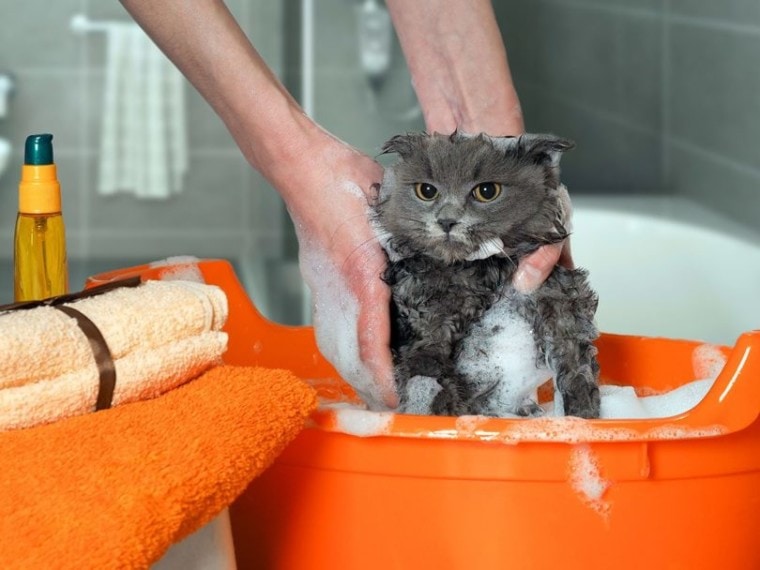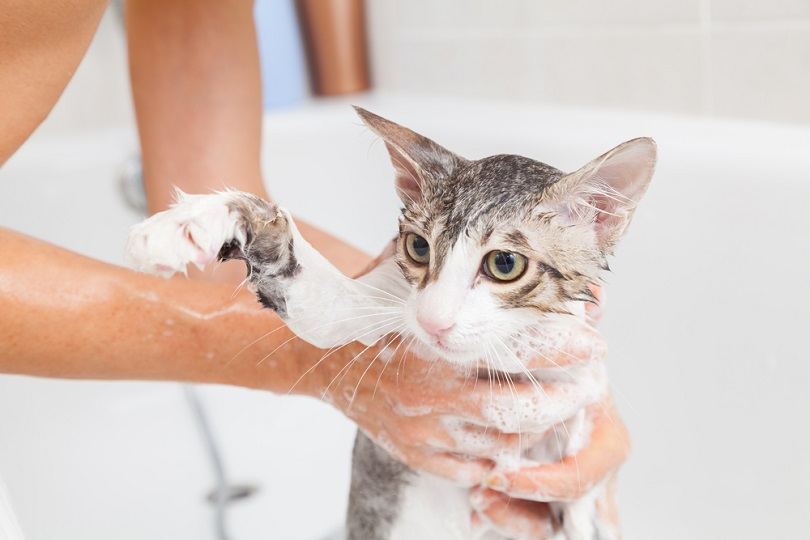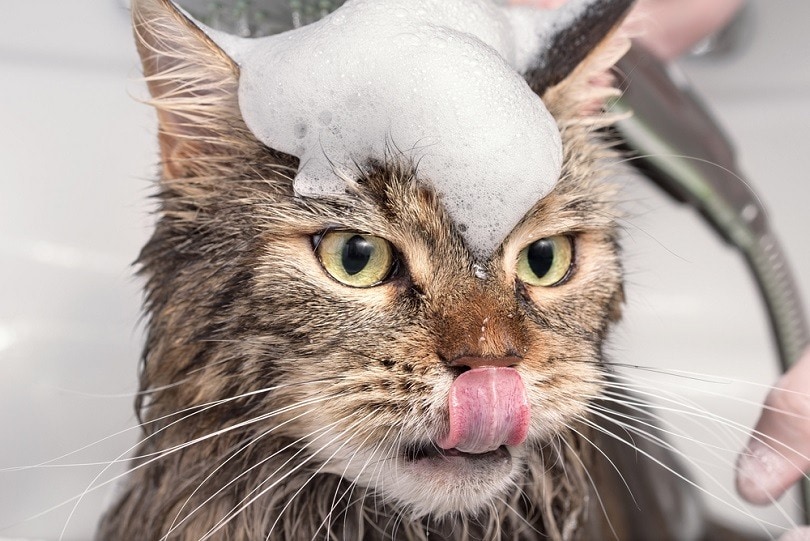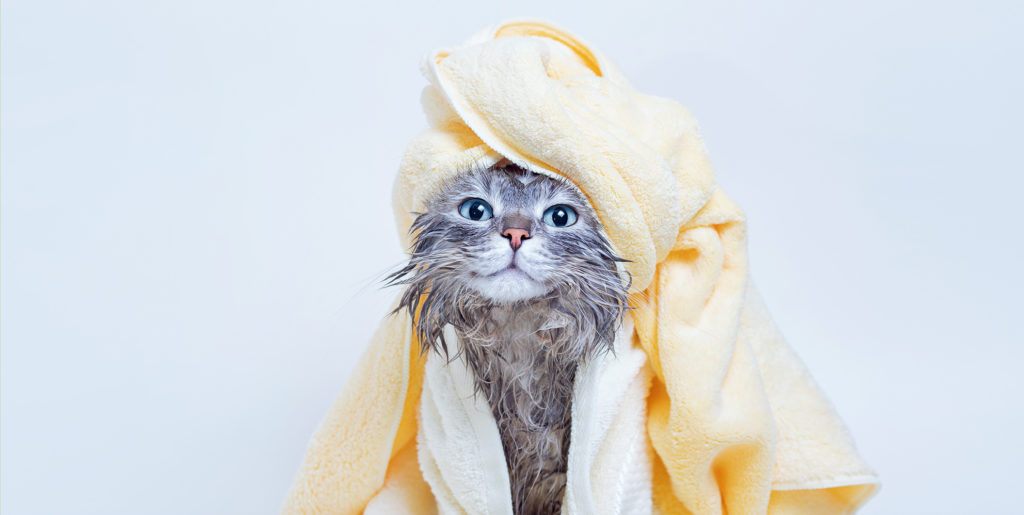
Cats are inherently clean animals that like to groom themselves and don’t often need baths. Sometimes, however, it is necessary to bathe your cat. Whether your cat has become unable to groom themselves or they’ve gotten into something nasty that has to be washed off, you may find yourself facing the dreaded cat bath.
Of course, you’ll need shampoo to wash your cat. Whether you prefer to make your own due to budgetary constraints or simply don’t have time to run out and find cat shampoo, you can make a safe and effective, all-natural shampoo with ingredients that you already have on hand. Here are five homemade solutions for cat shampoo.
Top 5 DIY Cat Shampoo Recipes
1. Basic Cat Shampoo
Basic Cat Shampoo
Equipment
- Bowl
- Clean bottle
Materials
- 4 cups warm water
- 1 cup apple cider vinegar
- 1 cup Dawn dish soap
Instructions
- Carefully mix all the ingredients in a bowl. Then pour into a clean bottle or container. Avoid shaking the mixture too vigorously, as the Dawn dish soap will foam.
- Wet your cat with lukewarm water, pour shampoo on them, and rub it in, making sure the soap reaches your cat’s skin.
- Rinse your cat thoroughly.
- Pat dry.
2. Moisturizing Cat Shampoo

For cats with sensitive or dry skin, this moisturizing cat shampoo recipe will provide them with a bit of relief. It includes vegetable glycerin for extra moisture. If you are in a pinch and don’t have this ingredient on hand, you can substitute Dawn dish soap. The glycerin, however, adds extra moisturization that helps with dry skin.
3. Cat Shampoo for Sensitive Skin

Try this recipe for a gentle shampoo that doesn’t irritate sensitive skin. Oatmeal and baking soda are found in many commercial cat shampoos to help soothe dry skin and keep your cat’s fur soft.
4. Homemade Dry Shampoo

Human dry shampoo is typically made from a combination of cornstarch and alcohol designed to absorb oils from hair. For cats, heated oatmeal works well to refresh their fur without having a drying effect on their skin.
5. Dry Shampoo for Odor Control

Most cats avoid becoming smelly, but if they need help with odor control, this homemade dry shampoo is designed for just that. Instead of oatmeal, it uses baking soda.
Considerations for Homemade Cat Shampoo
It’s important to know that you shouldn’t use shampoo meant for humans on a cat. Shampoos are designed to support the skin’s pH level, and people and cats have very different skin. Human shampoo will result in your cat having extremely dry skin.
Also, don’t add essential oils to cat shampoo in an effort to improve the smell. These can be toxic to your cat if they ingest the oils through self-grooming or if they are absorbed into the skin.
- See Also: 10 Best Cat Shampoos for Dander
Alternatives to Cat Shampoo

If you’re in a rush or don’t have the ingredients on hand to make cat shampoo, you still have options. Here are a few safe alternatives that you can use to bathe your cat. While it’s not a good idea to use them regularly, they will work when you’re in a pinch.
Please note that these alternatives are best saved for emergency uses only and should not be used on a regular basis to bathe your cat.
Final Thoughts
It is probably ideal to keep cat shampoo on hand, so you aren’t scrambling in an emergency. Mixing up one of these DIY solutions ahead of time will help you be prepared. Since cats don’t need to be bathed often, it should last a while. But if you do find yourself with a messy cat and no shampoo, there are safe alternatives.
See Also:
- 10 Best Hypoallergenic Cat Shampoos – Reviews & Top Picks
- 10 Best Organic Cat Shampoos – Reviews & Top Picks
Featured Image Credit: Irina Kozorog, Shutterstock






